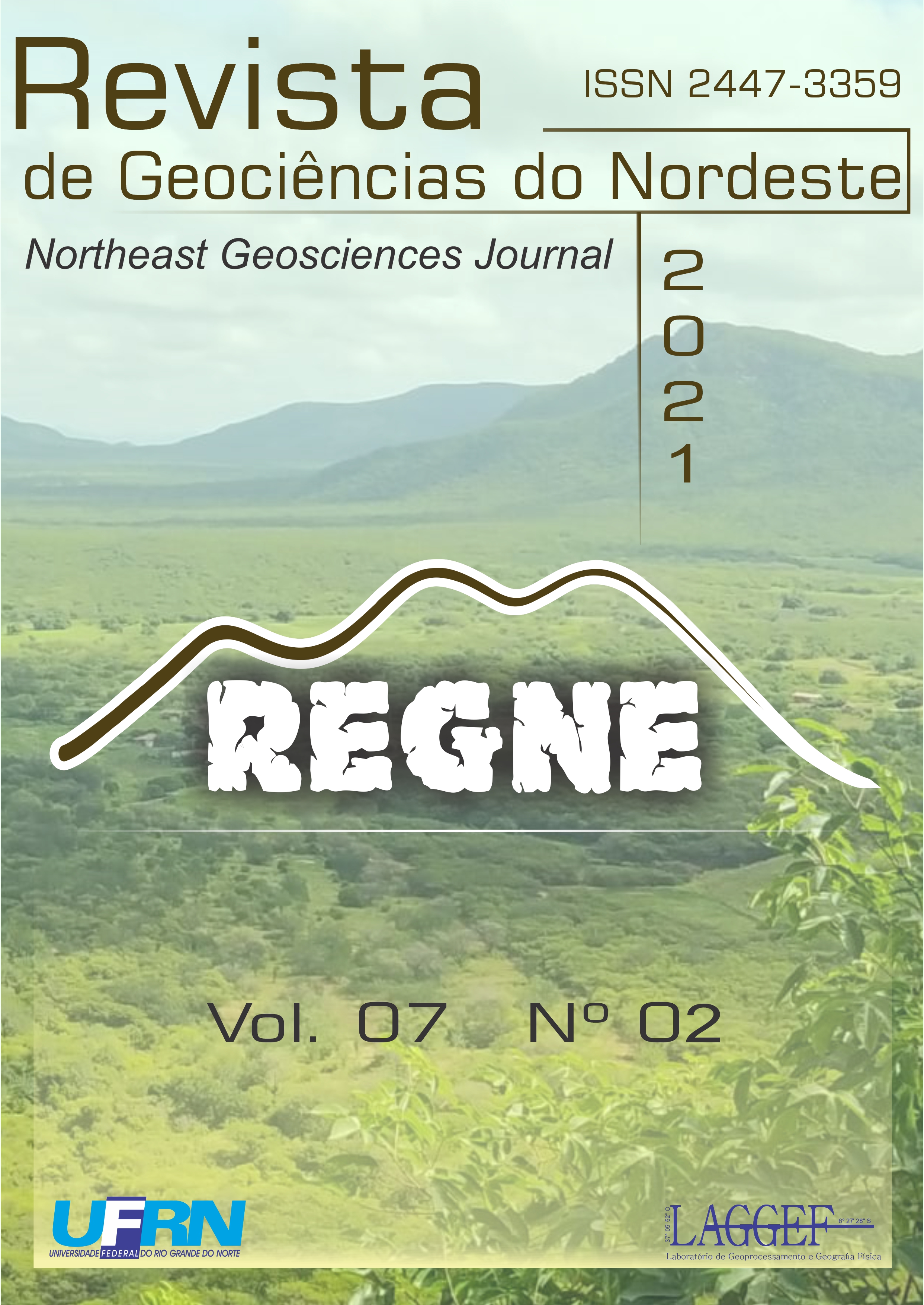Ilhas de calor na zona urbana de Crato/Ceará/Brasil
DOI:
https://doi.org/10.21680/2447-3359.2021v7n2ID21642Resumo
O presente trabalho em questão tem por objetivo identificar as ilhas de calor presentes na zona urbana do Crato-CE, mensurando dados de temperatura e umidade do ar correlacionado tais dados com as características geoecológicas e urbanas da referida cidade. Para tanto, adota-se as concepções do Professor Carlos Augusto de Figueiredo Monteiro (1976), que formulou a Teoria do Sistema Clima Urbano (S.C.U), identificando três canais de percepção humana: Termodinâmico, Hidrometeórico e Físico-químico. O trabalho aqui apresentado tem como foco o canal Termodinâmico. Para estruturação da pesquisa foi adotada a metodologia de pontos fixos, analisando a temperatura das 9h,15h e 21h. Foram feitos o levantamento bibliográfico e a cartografia da área estudada. Os resultados apontam a existência de ilhas de calor variando de muito forte a moderada e é discutido ao longo do trabalho os dados coletados e possíveis soluções.
Downloads
Downloads
Publicado
Como Citar
Edição
Seção
Licença
Copyright (c) 2021 Revista de Geociências do Nordeste

Este trabalho está licenciado sob uma licença Creative Commons Attribution 4.0 International License.


 Português (Brasil)
Português (Brasil) English
English








